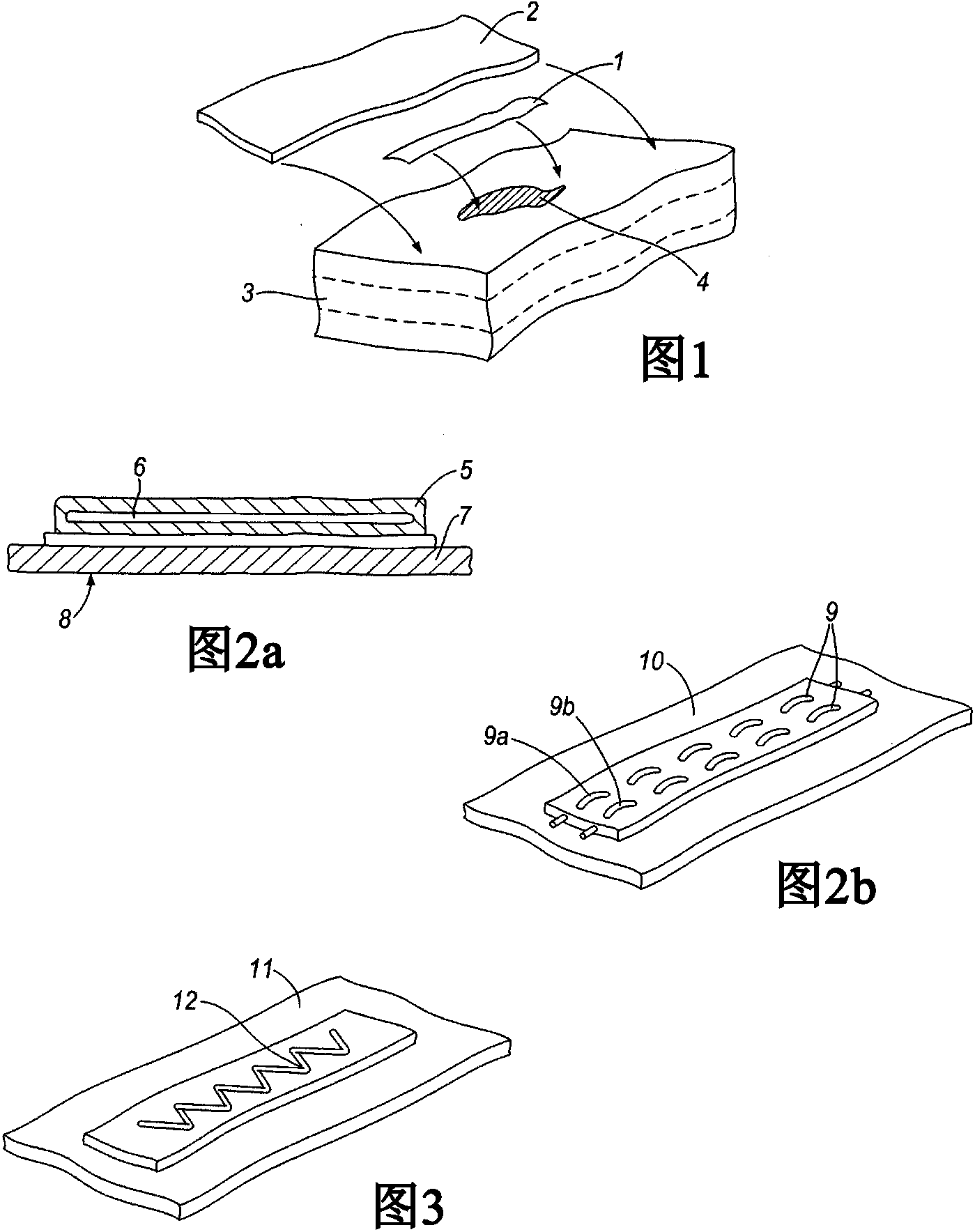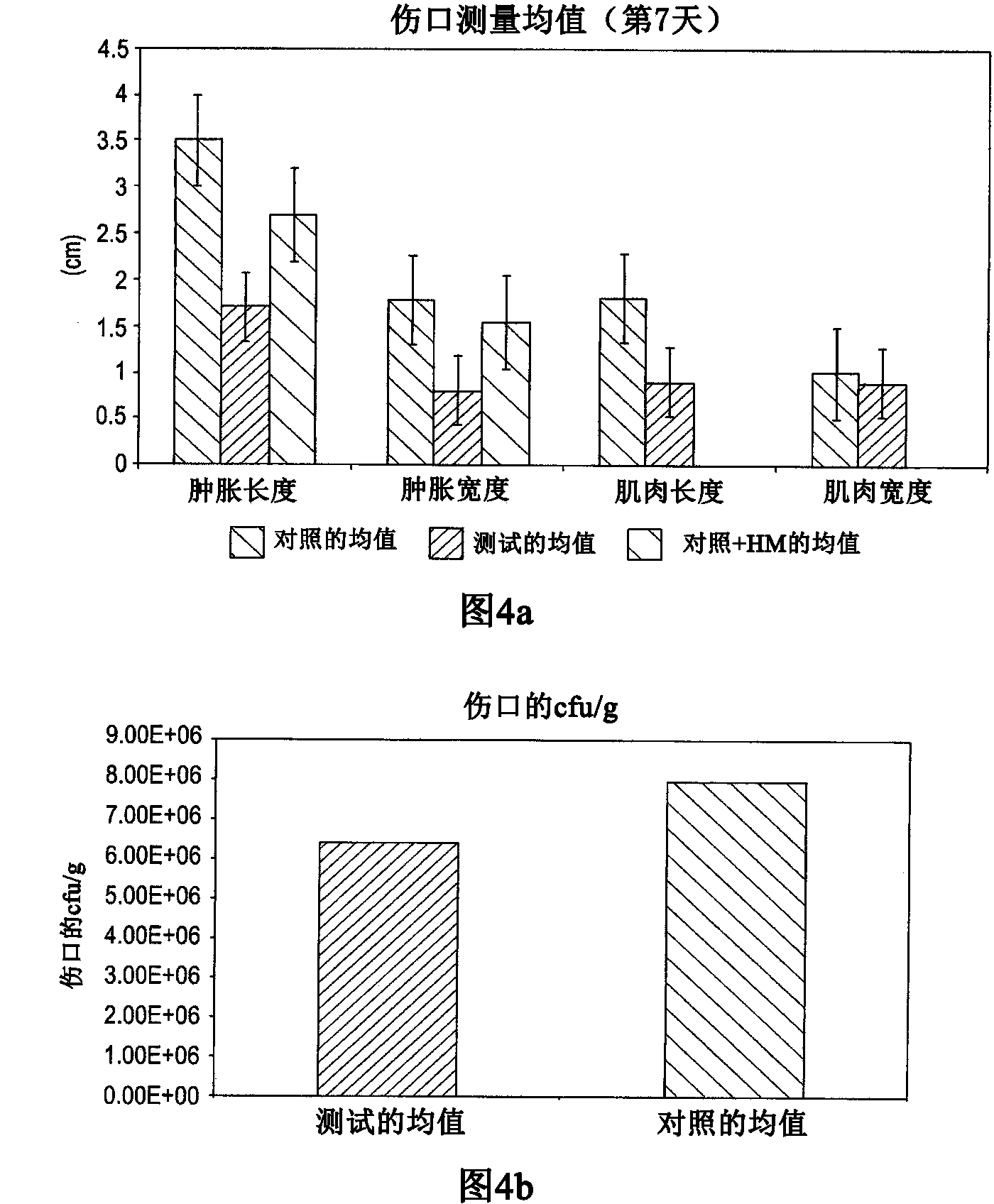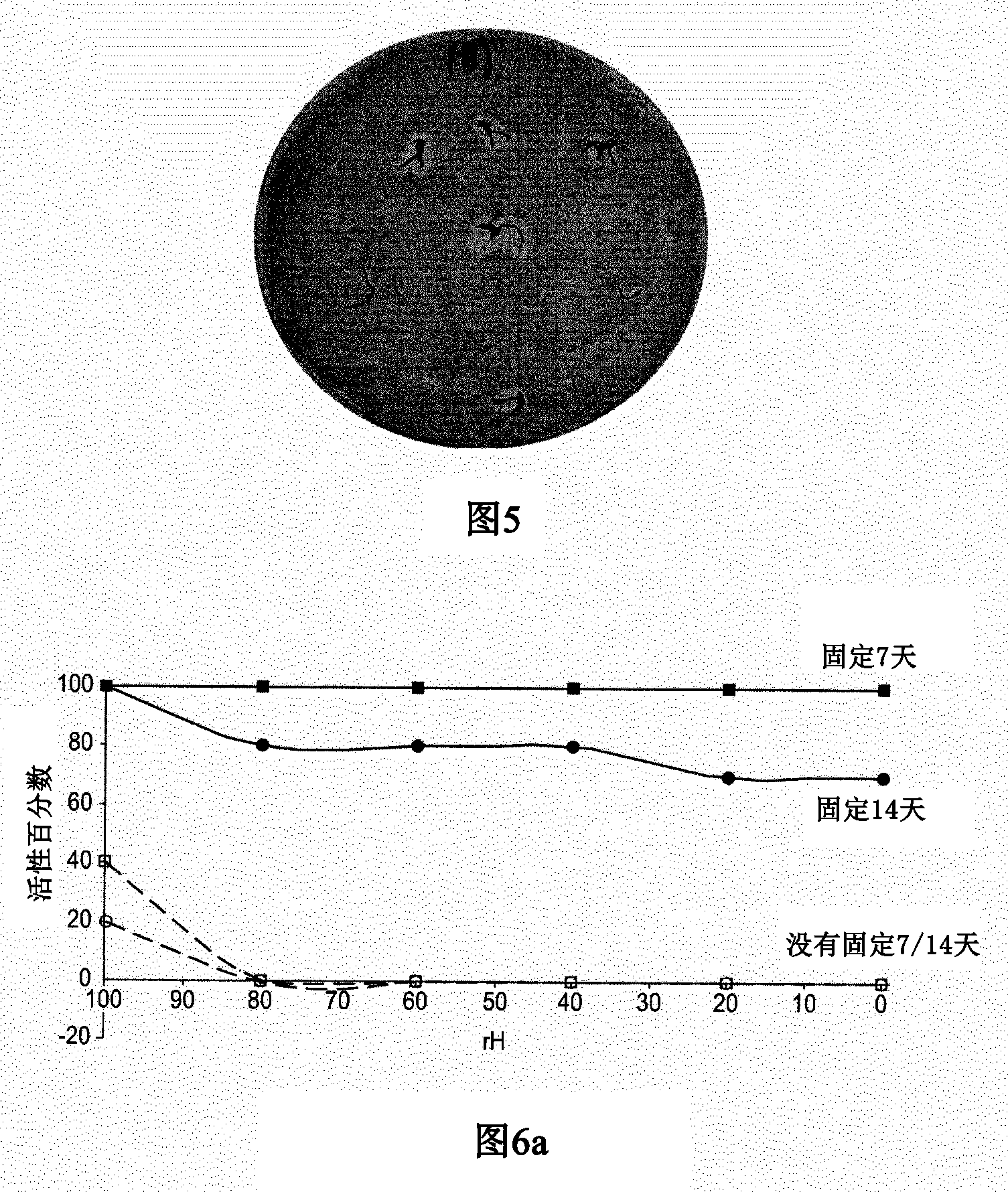Delivery of viral agents
A disease and plant material technology, applied in the direction of viruses/phages, biocides, medical raw materials derived from viruses/phages, etc., can solve problems such as germination rate, growth and/or yield reduction, and adverse effects of factors on plant growth
- Summary
- Abstract
- Description
- Claims
- Application Information
AI Technical Summary
Problems solved by technology
Method used
Image
Examples
Embodiment 1
[0107] Example 1 - Efficiency of LVCCs in delivering phage against deep wound infection.
[0108] figure 1 Schematically shown is the pressing of the inventive LVCC ( 1 ) onto a wound ( 4 ) in tissue ( 3 ) through a dressing ( 2 ).
[0109] Figure 2a is an inverted dressing of the invention incorporating an LVCC, shown in cross-section. The bag (5) encloses the LVCC (6) adhered to the dressing (7), which has a dressing top surface (8) - thus, it is inverted in the figure.
[0110] Figure 2b A LVCC (9) woven into a dressing (10) is schematically shown. The two filaments (9a and 9b) are different colors and have different phage attached. image 3 A further schematic of the dressing (11) incorporating phage-attached filaments (12) is shown.
[0111] In a first example, an in vivo model was used to demonstrate the efficiency of LVCCs in delivering phage against bacterial infection in the setting of an infected deep wound. Deep wounds penetrating multiple tissue layers inf...
Embodiment 2
[0115] Example 2 - Prolonged Stability
[0116] LVCCs recovered from infected subjects were washed and stored at 4°C and periodically assessed for their in vitro sustained antimicrobial activity against MRSA growth.
[0117] In a series of experiments, LVCC was demonstrated to maintain anti-MRSA activity by placing it in a bacterial lawn. After storage, phage activity (as shown by the cleared areas seen around the recovered LVCC) persists for several weeks -- see Figure 5 .
Embodiment 3
[0118] Embodiment 3--LVCC resists the stability brought by drying, ultraviolet radiation and temperature
[0119] In these examples, activated nylon polymers or cotton fibers were used as carrier matrices to create LVCCs. Phage-attached LVCCs were exposed to a range of environmental conditions, including desiccation, as indicated by the effect of relative humidity on phage survival (see Figure 6a ), UV light (see Figure 6b ) and elevated temperature (see Figure 6c ), all conditions are known to denature free phage.
[0120] Three 2×1 cm phage strips were placed on LBM agar and exposed to ultraviolet light for 5, 15 and 30 min in a sterile operating cabinet. The strips were then turned over and placed on a fresh area of the agar, and the UV exposure was repeated. Control phage strips were treated similarly but shielded from UV light. Then, these strips were transferred to 15 ml of LB liquid medium, inoculated with 50 μl of Staphylococcus aureus suspension and cultured...
PUM
 Login to View More
Login to View More Abstract
Description
Claims
Application Information
 Login to View More
Login to View More - R&D
- Intellectual Property
- Life Sciences
- Materials
- Tech Scout
- Unparalleled Data Quality
- Higher Quality Content
- 60% Fewer Hallucinations
Browse by: Latest US Patents, China's latest patents, Technical Efficacy Thesaurus, Application Domain, Technology Topic, Popular Technical Reports.
© 2025 PatSnap. All rights reserved.Legal|Privacy policy|Modern Slavery Act Transparency Statement|Sitemap|About US| Contact US: help@patsnap.com



